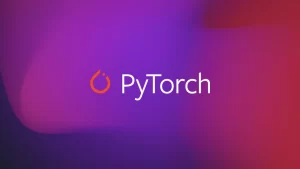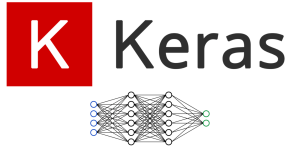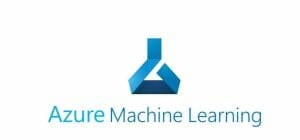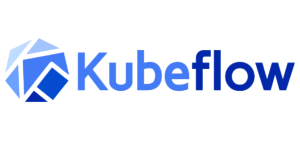Introduction – Machine Learning Software
Machine learning software refers to computer programs, libraries, and frameworks that are designed to facilitate the implementation of machine learning algorithms and models. These software tools are essential for developing, training, evaluating, and deploying machine learning models for a wide range of applications. Machine learning software often includes tools for data preprocessing and cleaning.
This involves tasks such as data normalization, feature engineering, handling missing values, and data augmentation to make the data suitable for training. It allows users to specify hyperparameters, loss functions, and optimization methods to fine-tune models for specific tasks. Machine learning software includes popular machine learning frameworks like TensorFlow, PyTorch, and sci-kit-learn, as well as libraries and APIs that simplify the development process.
Here is a list of 11 tools and platforms commonly used in the field of AI and machine learning for tasks such as training, deploying, and managing machine learning models.
1. TensorFlow
TensorFlow is an open-source machine learning framework developed by the Google Brain team. It has gained significant popularity in the field of artificial intelligence and machine learning due to its flexibility, scalability, and extensive community support. TensorFlow is a versatile framework that supports a wide range of machine learning tasks, including deep learning, neural networks, natural language processing, computer vision, reinforcement learning, and more. It provides a comprehensive ecosystem for developing machine learning models. TensorFlow seamlessly integrates with Keras, a high-level neural networks API. This integration allows users to build and train deep learning models using Keras syntax while benefiting from TensorFlow’s underlying capabilities. Its robust feature set, community support, and integration with other libraries make it a powerful choice for machine learning and deep learning projects.
2. PyTorch

PyTorch is an open-source deep learning framework developed primarily by Facebook’s AI Research Lab (FAIR). It has gained popularity in the machine learning and deep learning communities for its dynamic computation graph, flexibility, and Pythonic approach to building and training neural networks. PyTorch provides a powerful multi-dimensional array called a tensor, which is similar to NumPy arrays but with GPU support. Tensors are fundamental for defining, training, and manipulating neural networks. PyTorch supports deployment on mobile and embedded devices through PyTorch Mobile and PyTorch Micro, making it suitable for edge computing and mobile applications. PyTorch provides tools and libraries for deploying models to production environments, including PyTorch JIT for model optimization and TorchScript for model serialization.
3. sci-kit-learn
sci-kit-learn, often abbreviated as learn, is an open-source machine-learning library for the Python programming language. It is one of the most popular and widely used libraries for machine learning and data science tasks due to its simplicity, versatility, and comprehensive set of tools. Scikit-learn offers a wide variety of machine learning algorithms for classification, regression, clustering, dimensionality reduction, and more. This includes popular algorithms like decision trees, support vector machines, k-means clustering, and many others. Its simplicity and ease of use make it an excellent choice for quickly prototyping and deploying machine learning models in real-world applications.
4. Keras – Machine Learning Software

Keras is an open-source high-level neural network API written in Python. It was originally developed by François Chollet and later integrated into TensorFlow as its official high-level API. Keras is designed to be user-friendly, modular, and extensible, making it an excellent choice for building and prototyping deep learning models. Originally, Keras was backend-agnostic, meaning it could run on top of multiple deep learning frameworks, including TensorFlow, Theano, and CNTK. However, in TensorFlow 2. x, Keras became an integral part of TensorFlow, and TensorFlow serves as the default backend. Its simplicity and ease of use make it a valuable tool for rapid prototyping and experimentation with neural networks.
5. Apache Spark MLlib
Apache Spark MLlib (short for Machine Learning Library) is a machine learning library that is part of the Apache Spark ecosystem. Apache Spark is a distributed data processing framework that provides fast and scalable data processing capabilities. MLlib is designed to work seamlessly with Spark and enables distributed machine learning on large datasets. MLlib provides a wide range of machine-learning algorithms for classification, regression, clustering, recommendation, and more. These algorithms are optimized for distributed processing and can handle large-scale data. It also integrates with other Spark ecosystem projects like Spark GraphX for graph processing. Its distributed nature and extensive library of machine-learning algorithms make it a powerful tool for data scientists and engineers working with big data.
6. AWS SageMaker
Amazon SageMaker is a fully managed machine learning service provided by Amazon Web Services (AWS). It is designed to simplify the process of building, training, deploying, and managing machine learning models at scale. SageMaker offers a comprehensive set of tools and features to support the end-to-end machine-learning workflow. SageMaker includes a variety of built-in machine-learning algorithms for common tasks such as classification, regression, clustering, and recommendation. These algorithms are optimized for distributed processing and can handle large datasets. Its managed services and integration with the broader AWS ecosystem make it a powerful platform for building and operationalizing machine learning applications.
7. Microsoft Azure Machine Learning

Microsoft Azure Machine Learning is a cloud-based machine learning platform provided by Microsoft as part of the Azure cloud computing service. It offers a range of tools and services for building, training, deploying, and managing machine learning models and solutions. Azure Machine Learning integrates with various data storage services within Azure, including Azure Blob Storage, Azure SQL Database, and Azure Data Lake Storage. This allows seamless data ingestion and preprocessing. Its cloud-native design and integration with Azure services make it a powerful platform for developing and deploying machine learning solutions at scale.
8. IBM Watson Studio
IBM Watson Studio is a cloud-based integrated development environment (IDE) offered by IBM for building and deploying machine learning and data science solutions. It is part of the IBM Watson platform, which provides various AI and data analytics services. Watson Studio aims to simplify the entire data science and machine learning lifecycle, from data preparation and exploration to model development and deployment. The platform includes Jupyter Notebook support for data exploration, data cleaning, and building machine learning models. Users can leverage a variety of programming languages, including Python and R. It supports open-source tools and libraries, enabling users to integrate their existing workflows and code. It also supports containerization for deploying models on Kubernetes.
9. Docker – Machine Learning Software
Docker is an open-source platform and toolset for developing, shipping and running applications and services in containers. Containers are lightweight, standalone, and portable units that package everything needed to run an application, including the code, runtime, system tools, and libraries. Docker provides a consistent and efficient way to build, deploy, and manage applications across different environments, from development to production. Docker supports orchestration tools like Docker Swarm and Kubernetes for managing and scaling containerized applications across clusters of machines. It is widely used in software development, testing, and deployment across various industries and use cases, including web applications, microservices, data analytics, and more.
10. Kubeflow

Kubeflow is an open-source platform designed to make it easier to develop, deploy, and manage machine learning (ML) and artificial intelligence (AI) workflows on Kubernetes. Kubernetes is a container orchestration platform that allows you to manage and scale containerized applications efficiently. Kubeflow extends Kubernetes’ capabilities to provide a seamless and production-ready environment for ML and AI workloads. Kubeflow is composed of various components and libraries that can be customized to fit your specific needs. This includes components for data processing, model training, serving, and monitoring. It is a valuable platform for organizations looking to operationalize ML and AI within their Kubernetes environments.
11. H2O.ai
H2O.ai, often referred to simply as H2O, is an open-source machine learning platform that specializes in AI and machine learning automation. H2O.ai offers a suite of products and tools designed to make it easier for data scientists and organizations to build, deploy, and manage machine learning models. H2O.ai supports deep learning with the H2O Deep Water library, which allows users to build and train deep neural networks using popular deep learning frameworks like TensorFlow and MXNet. The platform includes features for time series analysis and forecasting, which is valuable for applications in finance, supply chain, and more. H2O.ai provides tools for managing the entire machine learning model lifecycle, from development to deployment and monitoring.
Create Your Own Website
Utilize the Edufire WordPress Theme to effortlessly build a variety of educational websites, including LMS websites, eLearning platforms, sites for universities, schools, colleges, training centers, kindergartens, and online courses. This theme is fully dedicated to e-learning and seamlessly integrates with the LearnDash plugin. With LearnDash LMS, you gain access to a plethora of engaging features that enable you to create, market, and sell courses effortlessly.
Edufire LMS Theme simplifies the process of generating courses, lessons, and quizzes. Whether you’re an educational institution or an individual educator, this theme provides a user-friendly solution for establishing an online presence and offering your educational content to a global audience.
Conclusion – Machine Learning Software
In conclusion, AI and machine learning software have ushered in a transformative era in data-driven decision-making and automation. These powerful tools, including TensorFlow, PyTorch, sci-kit-learn, Keras, and more, have democratized access to cutting-edge machine learning algorithms, making it possible for both individuals and organizations to harness the potential of artificial intelligence. From developing complex neural networks to orchestrating machine learning workflows and deploying models at scale, these software libraries and platforms play a pivotal role in solving real-world problems across diverse domains.
Interesting Reads:
10 Best Internal Communication Software for Online Team Collaboration
10 Best Local Business Marketing Tools for Local Communities
7 Best Language Learning Tools for Cultural and Personal Growth


